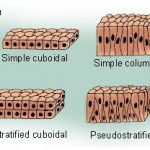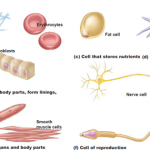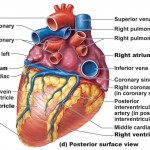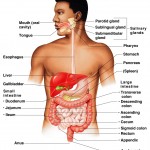Digestive System Overview
Digestive system: The alimentary canal and accessory digestive organs
Organs of the digestive system are divided into two main groups: organs within the alimentary canal and accessory digestive organs.
The alimentary canal, which is also called the gastrointestinal (GI) tract or gut, is the entire length of tube that winds through the body from the mouth to the anus. It digests, breaks down and absorbs food through its lining into the blood.
Obviously, the digestive system is an extremely important part of the human body so any medical issues people experience need to be treated straight away. Conditions like Barrett’s oesophagus, polyps, cancer of the colon, and pancreatitis are very serious but there are different endoscopy types and numerous treatments that can help make the digestive system healthy again.
Organs within the alimentary canal include the mouth, pharynx, esophagus, stomach, small intestine, and large intestine. The alimentary canal is considered outside of the body because it is open to the external environment at each end (mouth, anus).
The accessory digestive organs include the tongue, teeth, gallbladder, salivary glands, liver, and pancreas. While the teeth and tongue lie within the mouth, the digestive glands and gallbladder actually lie outside of the GI tract and connect to it through pathways called ducts. The digestive glands aid in mechanical breakdown of food by producing several types of secretions.
Six Digestive Processes
The process of digestion involves six steps
- Ingestion– is the act of taking food into the digestive tract. In short, ingestion is eating.
- Propulsion– is the manner in which food is moved through the digest tract. This includes swallowing and peristalsis. Peristalsis is the main mean of propulsion and involves contraction and relaxation of muscles surrounding the organs. It’s main purpose is to squeeze food through the GI tract (a small amount of mixing occurs also). Peristalsis is so strong that you would continue to digest food even if you were upside down.
- Mechanical breakdown– includes chewing, mixing-food with the tongue, stomach churning, and segmentation (constrictions in the small intestine). Mechanical breakdown increases surface area which increases absorption. Segmentation mixes food with digestive juices in the small intestine which also increases absorption.
- Digestion– is the chemical breakdown of food. It involves a series of steps, but the main idea is that enzymes are secreted into the alimentary canal (GI tract) by accessory digestive glands and the gall bladder that aid in the breakdown of food molecules.
- Absorption- is the uptake of end products of digestion into the blood or lymph through the walls of the GI tract.
- Defecation– eliminates whatever is indigestible and not absorbed through the GI tract out of the body through the anus as feces.
Most organs within the digestive system take part in more than one of the above steps, but some functions are only performed by a single organ. For instance, only the mouth participates in ingestion, and defecation only occurs in the large intestine. On the other hand, propulsion happens within every organ of the alimentary canal.
The stomach plays a big role in the mechanical breakdown and digestion of food. Sometimes that breakdown can be interrupted and cause more issues for the body, this is where supplements like gundry md total restore come in handy to help the gut get back to functioning properly. The small intestine is the main absorber, even though the large intestine and stomach also absorb certain substances. In contrast, the pharynx and esophagus only contribute to propulsion and have nothing to do with breakdown, digestion or absorption at all.
Related Posts
Category: Digestive












